The people that did this had to not know that this painting in good condition was worth at least $75,000! I mean, who treat beautiful art like this? Well… maybe I should answer my own question as I HAVE GOT STORIES and true confessions! Well, anyway, here is the quick video of the painting’s resurrection and thankful return to it’s former glory…
Professional art restoration ethics and practice, painting conservation grade materials, art connoisseurship and expertise all contribute to the long term results of halting deterioration, stabilizing the trauma of damage, restoring the beauty and original nature of the artwork and ensuring the long term durability of the procedures.
So, do the art conservation treatments required for the repair of this painting add back the value to the damaged work of art? Is the money worth it or is it a good investment? All questions I hear often…
The first question to ask is, “What is the artwork worth shredded like this?” Well, not much… unless you know a guy who can fix it!!
So, let’s say it costs $5K to fix the rips and make it look perfect. Then how much value is added back? It is, of course, not in perfect condition even though IT LOOKS perfect. No one will pay the price of an undamaged equivalent for an extensively repaired work of art. Of course, the quality of the repair can make all the difference in the world.
So, the value depends. If you find the painting in a dumpster and you put $5K into it, I’d say you’ve hit a small lottery. But if you paid $50K for the painting a few years ago and it was your drunk neighbor’s champagne glass that went through it (and you don’t have insurance) then you are going to take a hit.
For a realistic info on the value of your damaged artwork, contact a certified appraiser. Call Richard Holgate at 805 895 5121 and tell your story to him.
I was the art conservator for the Colin Campbell Cooper Estate for many years and worked closely with Sherrill Hendersen, the artist’s grand niece. I have has been, in fact, responsible for the authentication of several lost valuable works by this artist. For another example of art authentication. In fact on this video, there’s an example of a hidden signature of Colin Campbell Cooper. Subscribe to our YouTube Channel!! How about a thumbs up… on everything!!! Click here:
Contact info Scott M. Haskins 805 564 3438 faclartdoc@gmail.com
Appraisal info Richard Holgate 805 895 5121 jrholgate@yahoo.com
George Stern Fine Arts 310 276 2600 gsfinearts@aol.com

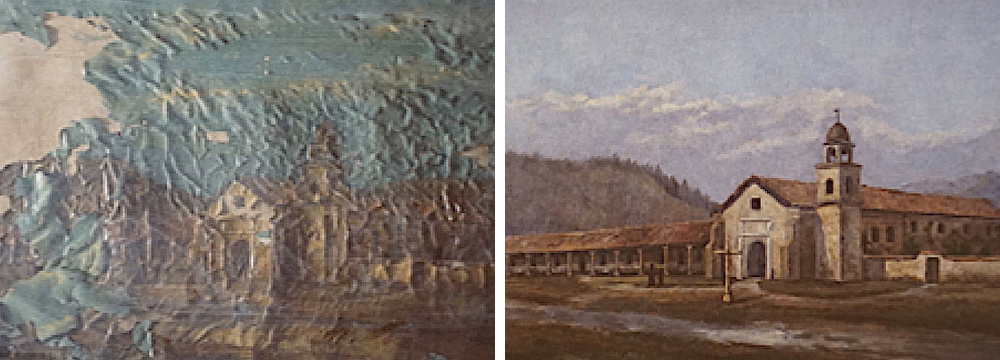
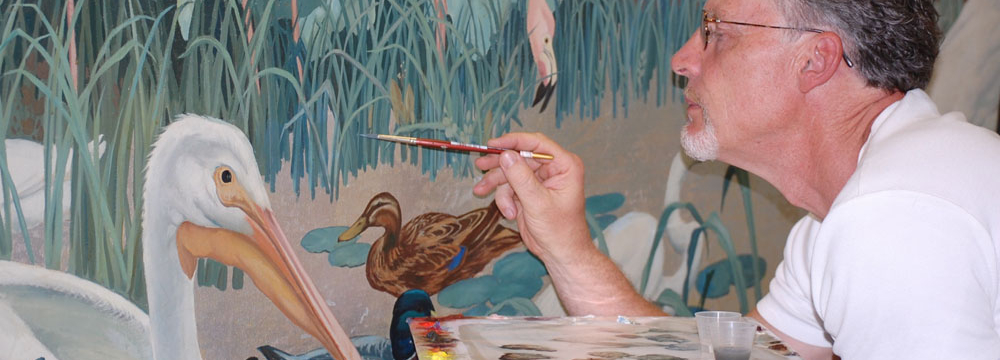
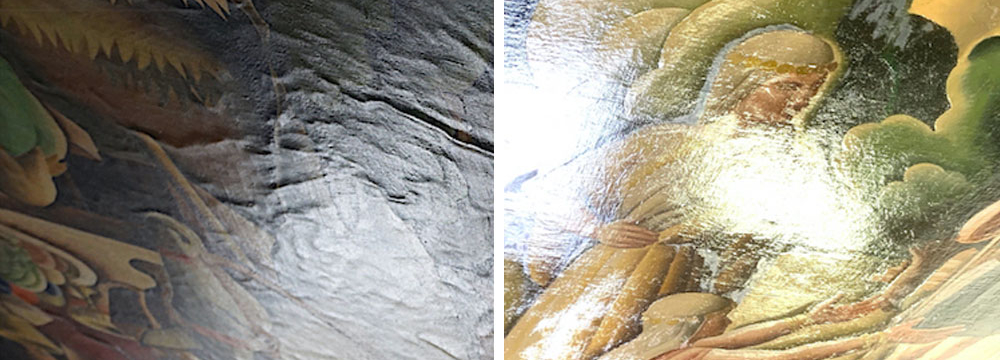

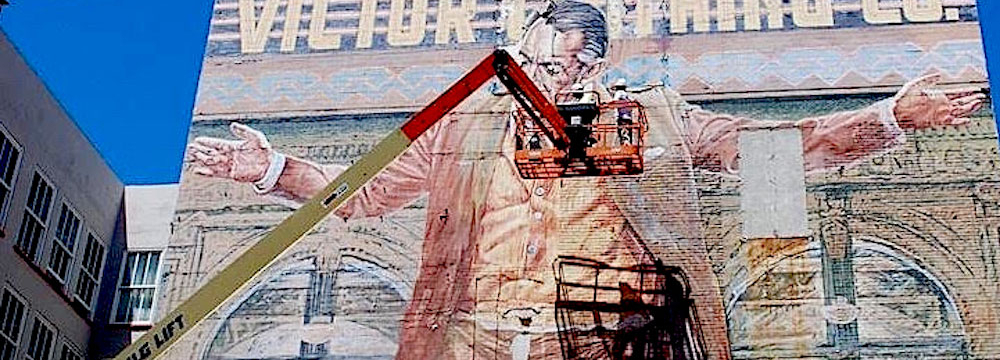
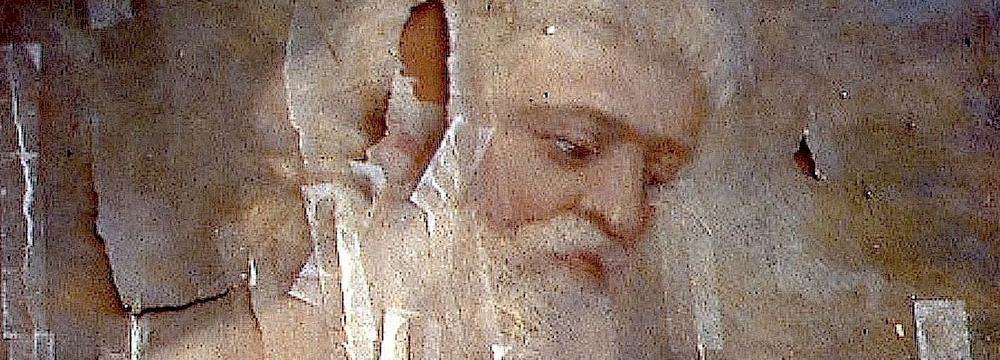
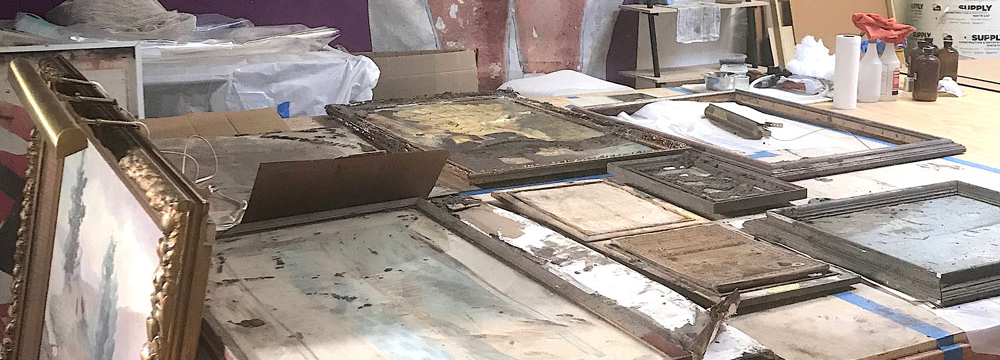

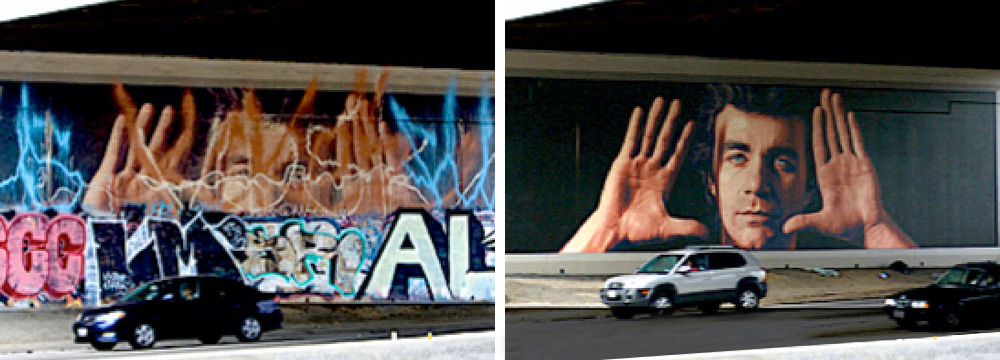
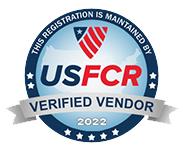
That is amazing work! Something like that I would have put right in the trash figuring there was nothing that could be done. I am impressed!
I think it’s better to quote the exact costs of the restoration when you are selling a resurrected painting. It’s important that the buyer understands and appreciates the technology and quality behind a restoration too.
Michael, ethical practices when selling a restored painting, especially an extensively worked on painting, would include disclosing the conditions, treatments and materials (but not necessarily the costs). Like buying a house or car, the condition and past work is very important, though not mandated by law. So, if you are trying to sell a $100.00 no one will get picky about a “condition report.” But when buying from a dealer or an auction house, its a must… but it doesn’t mean the report is accurate or complete so, caveat emptor.
I’m really impressed at the techniques and technology Fine Art Conservation uses, most people don’t know that art can be restored with less damage than ever before with modern techniques. You guys are the go to people for restoring and conserving any piece of art and I’ll definitely recommend you to anyone who needs restoration done.
Thanks Zoe, that’s quite a recommendation. Thanks for coming by our lab for a tour to see our work. Your due diligence was impressive.
I agree with the fact that value can consist of financial, historical or emotional importance. Sentimental value is often not given much importance. If something is valuable to you because it was a part of you history, don’t throw it away – however low its market price may be. And also – never fix it yourself, unless you can also perform heart surgery on you yourself. 😛 Leave the technical stuff to the professionals.
The quality of the repair makes a big difference I think. Poorly repaired work tends to reduce the value of the art even further. For example instead of binding the fibres together an amateur restorer would use tape at the back, which may reveal the tear and diminish the value of the painting.
Maryanne, the quality of the conservation work can make all the difference!
Wow, the manner in which the rip was repaired is just amazing, I mean you’d think fixing a torn canvas is just impossible.. And after the work was complete, the painting looks as though nothing happened. Great work guys!
Thanks Eugene!
Looking at the near-perfect outcome of the Colin Cooper piece, I think each and every work of art must be saved and repaired regardless of the change in value of painting. The value could change all the time as different styles and periods of art get popular.
True Vivian. The concept of how valuable something is changes with time. What is not appreciated in one generation is highly valued in the next. Remember what I have mentioned before in remarks and blog posts: Value can consist of financial, historical or emotional importance.
I’ve had a look at so much of the work done by Fine Art Conservations such as the uncovering of the murals in the Cedar Rapids City Hall and the restoration of one of William Kendall’s portraits. In every case the results looks magnificent and vibrant, as though the artwork has come alive.
Thanks Theodore for the nice comment and for staying in touch. For those who haven’t seen the other videos you mentioned, here is the short video of the removal of overpaint off of the murals in the City Hall: https://www.youtube.com/watch?v=HZW4JnxvVCo and here is a quick video about the gorgeous family portrait by William Kendall: https://www.youtube.com/watch?v=Qx_pt3P3_yw
I knew a friend who threw away some paintings because they were old and had a slight fade to them. He had inherited them but sadly, he didn’t know much about art and their value. I wish he had known the benefits of restoring them back then and had consulted an expert.
Riley, I have quite a few great stories of people who we smart enough to have the inherited artwork checked out. Thanks for leaving a comment.
Deciding on weather you want to restore something or not is sometimes very difficult. Its all about how the value of the painting would change after restoration, it may either increase or decrease. I would consult a professional appraiser first.
This is sometimes a good idea Henry. But sometimes the value of something depends on the emotional connect like a portrait of a loved ancestor or a historical item that connects with stories of family history. So, don’t base the value of everything on $ (or whatever currency you use).
In my opinion restoring artwork is like wearing contacts – it really does not corrupt the artist’s message, but allows us to better appreciate the message. And it exponentially increases the value of paintings from the past. I’d consider restoration and conservation as investments.
Many people do Bianca. In fact the “trade” of buying and selling art consider this part of the business all the time.
Imagine if the artists of old had access to the restoration technologies of today – I am sure they would have employed them to restore their damaged paintings and dozens, possibly hundreds of paintings would have been saved. I wish we were able to restore all the works of art were damaged in the past.
Unfortunately Andrew, some people don’t know when to keep their hands off. The biggest problems are created by people who thing they can fix anything… there’s no stopping them.
I used to think that restoration work always distorted the painting and that we are only “beautifying” the art in the pretext of restoration. Well now that I think of it, if damage is harmful in the first place, then trying to undo the damage albeit imperfectly is surely beneficial. After all a damaged piece would never be able to regain its original glory and integrity but we can always do our best to reverse the bad and get it as close as possible to the original.
Good thoughts Annie. Thanks for leaving your comments.